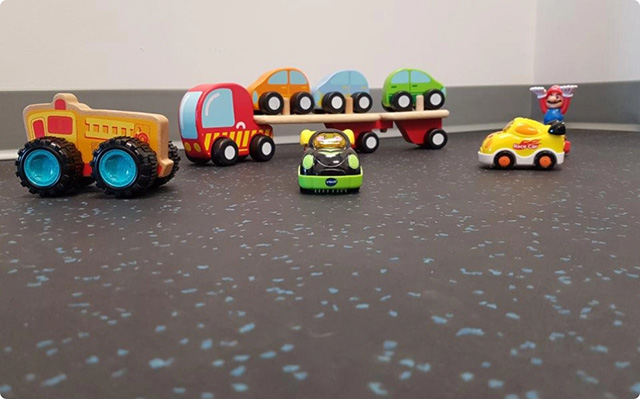Playground Flooring Buying Guide
Playgrounds are wonderful places for children to run, jump, and crawl, providing many physical benefits such as the development of strength, balance, dexterity, and coordination. But what separates a good playground from a great one is the safety and comfort it can provide our children. Many daycare playgrounds, school playgrounds, and commercial playgrounds must meet specific fall heights to ensure children’s safety. These fall heights are calculated based on the height and type of playground equipment used.
Rubber playground tiles and artificial playground turf are excellent options for building a safe, visually appealing, and accessible playground. In this guide, we will review the key points to consider when determining which playground surface option works best for your specific project and the specific benefits of both rubber park tiles and artificial playground turf in playground surfacing.

Things to Consider When Choosing Playground Flooring
How do you choose the best playground flooring? The main points we will discuss when selecting a playground surface are:
- Safety
- Compliance
- Accessibility
- Appearance
- Cost
First, the most important consideration is safety. Playground surfacing, regardless of material, should provide slip resistance, shock-absorbency, and long-lasting durability. Next, the playground surface must follow any fall height requirements (typical of commercial playgrounds, as opposed to backyard playsets). This will determine which surfacing options will comply in a desired application.
Another key factor to consider is playground accessibility. Inclusive and accessible playgrounds provide a fun environment for all children. Loose surfaces such as mulch playgrounds, crumb rubber playgrounds, and gravel playgrounds make it difficult (or impossible) for children with physical limitations to access the playground.
A further consideration is the appearance of the playground. Do you seek a bold, vibrant aesthetic or a serene, natural vibe? Perhaps there is a specific color or pattern that would highlight specific areas within the space? The material of the surfacing selected and the availability of color options may influence your decision when determining which surface is best suited to the appearance of your project.
Lastly, the cost of playground surfacing may be the deciding factor in selecting the material. Please contact one of our product specialists to discuss which playground surfacing option will work best for your project!

Benefits of Choosing Rubber Tiles or Artificial Turf with PlayPad Foam Padding for Your Playground
Rubber interlocking playground tiles are a cost-effective and durable option for playground surfaces. Because PlaySafe SHOCK park and play rubber tiles can satisfy a fall height requirement of up to 10’ when paired with PlayPad foam underlayment, they are one of the highest-performing and safest playground surfaces available. These tiles are easy to install with the innovative X-Connector interlocking system and can be installed over concrete, asphalt, crushed gravel, and any other solid surface.
PlayPad foam is also an excellent option for providing extra cushioning beneath artificial turf. When PlayPad underlayment foam is added beneath synthetic turf, the critical fall height protection is increased drastically (the exact fall height is determined by the type of turf used), protecting children from serious injuries on the playground.
Designed for indoor and outdoor use, weather-resistant PlayPad foam padding is a high-performing underlayment option for rubber tiles and artificial turf. Its superior impact attenuation reduces play-related injuries and can help achieve critical fall height requirements. The lightweight panels click in place quickly for easy installation, and the fast-draining foam allows surface moisture to flow through freely to prevent harmful accumulation.

Other Factors to Consider When Choosing Playground Flooring
When deciding which playground surface to choose, it’s important to consider additional factors in your budget before beginning. This may include installation costs, accessory costs, labor costs, and subfloor preparation. Many people overlook the importance of subfloor preparation in their budgeting- but remember that a well-prepared subfloor is crucial for a high-quality play surface. If you don’t have a level, firm surface, including this subfloor preparation cost in your budget is advisable.
In addition to subfloor preparation, you may need other installation accessories such as tape, adhesive, landscape spikes, utility knives, cleaning supplies, and knee pads. Deciding whether you plan to undertake the installation as a DIY project or hire a professional is important. If you opt for professional installation, obtaining an estimate of the labor cost in your location will provide a more accurate cost overview.









